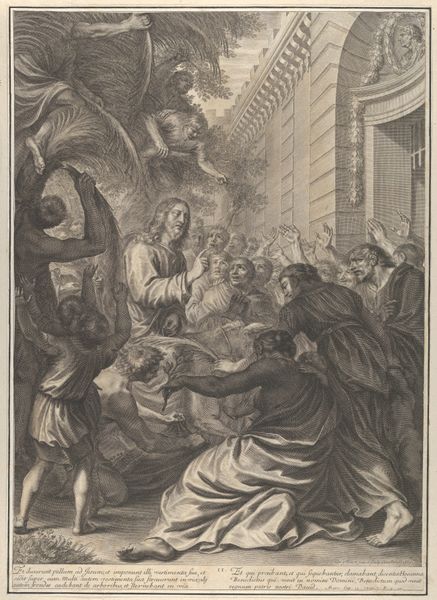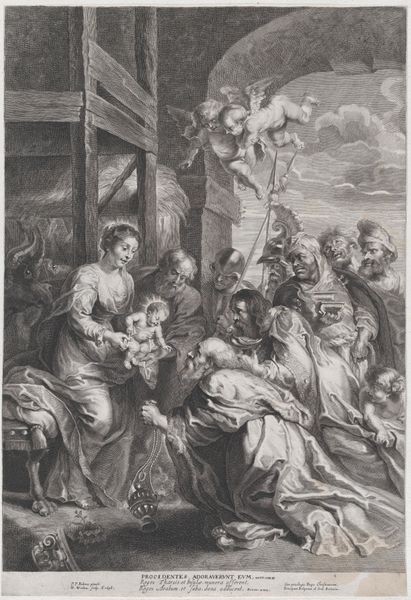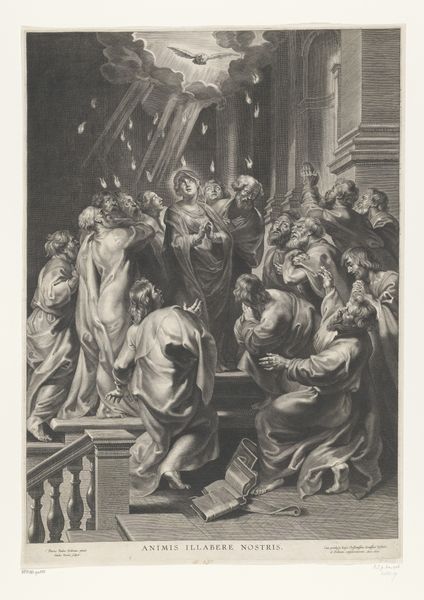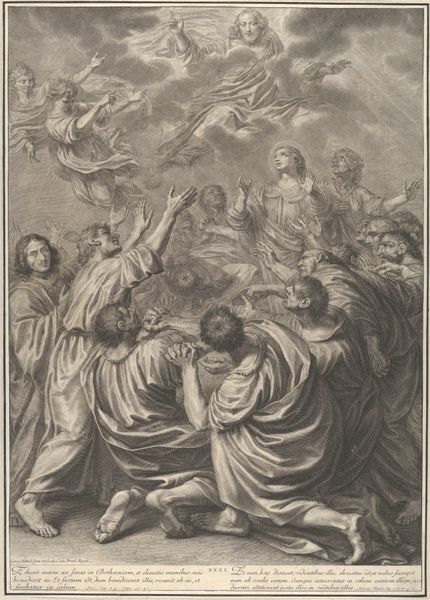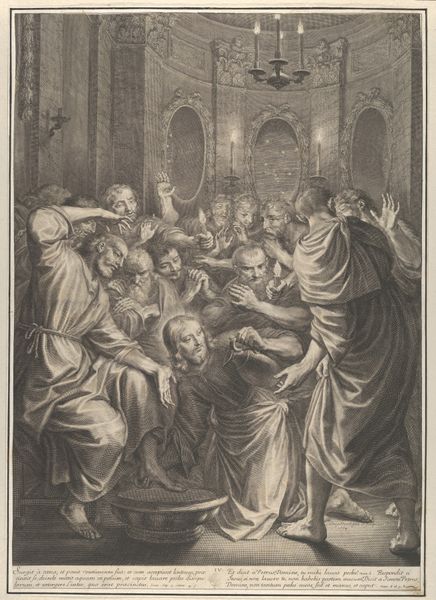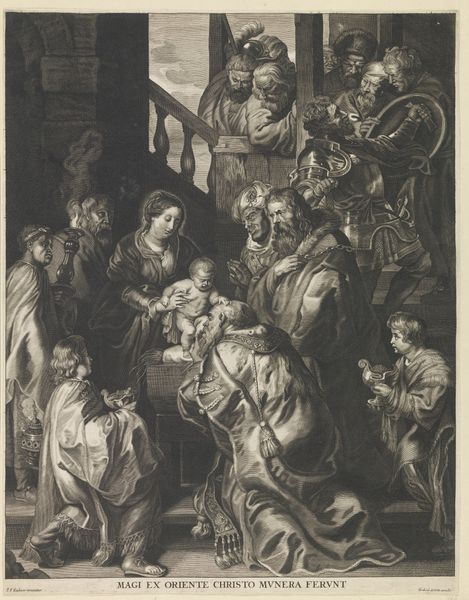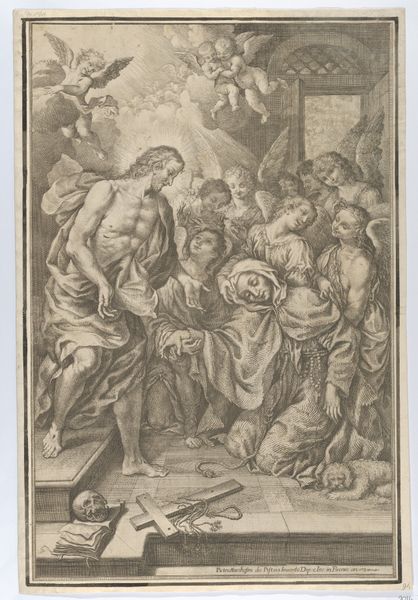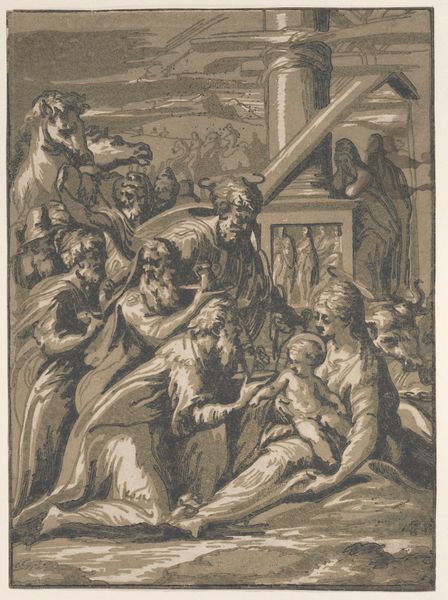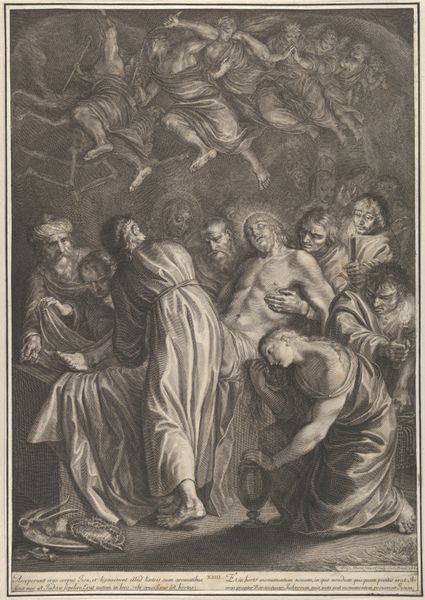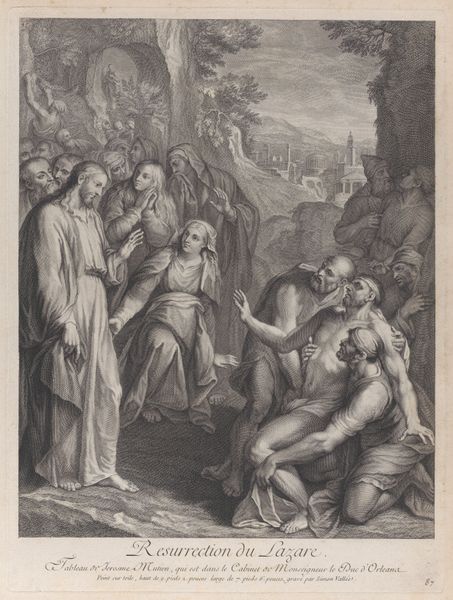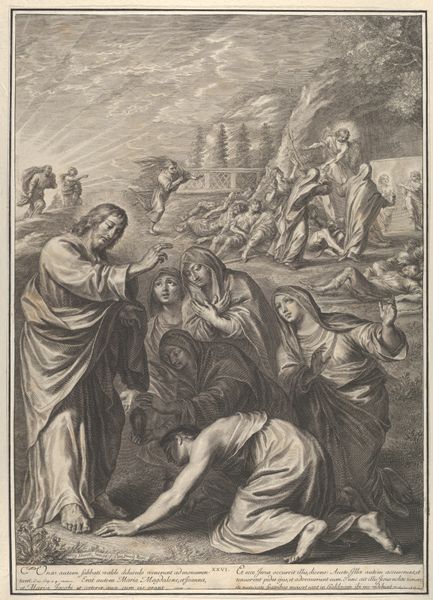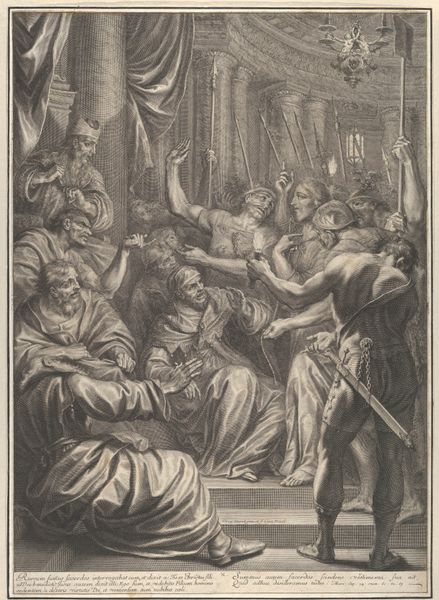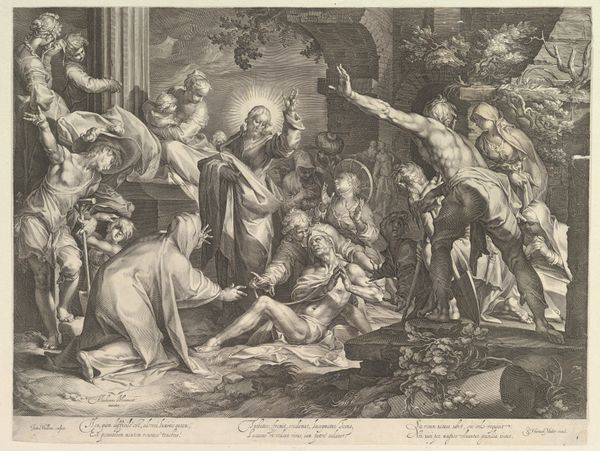
Christ Before Caiaphas looks to St. Peter, who Denies Him, from The Passion of Christ, plate 9 1664
0:00
0:00
drawing, print, engraving
#
drawing
#
baroque
# print
#
figuration
#
men
#
history-painting
#
engraving
#
christ
Dimensions: Sheet: 19 13/16 × 14 1/8 in. (50.3 × 35.8 cm)
Copyright: Public Domain
Curator: This engraving by Grégoire Huret, dating to 1664, is titled "Christ Before Caiaphas looks to St. Peter, who Denies Him, from The Passion of Christ, plate 9." The work resides here at The Met. Editor: Immediately, I'm struck by the dynamic composition. It’s overwhelmingly active, chaotic even. The light is interesting. Curator: The artist indeed masterfully arranges figures to draw our eyes across the pictorial plane. The lines create a visual push and pull, effectively conveying the drama of the biblical scene. Observe how the light pools and diverges throughout the complex, architectural rendering of this crucial event. Editor: Absolutely, and I can’t help but be drawn to the symbolic weight here. The composition’s clear intent is to emphasize the denial of Christ by Saint Peter, which appears deeply rooted in cultural anxieties of loyalty, faith, and betrayal. Note Peter's hunched, agonizing pose as a potent symbol of shame and regret—while Christ's gaze serves as an all-knowing assessment of this moment. Curator: Precisely! The diagonal thrust of Peter’s body countered by Christ's central verticality anchors the composition. Huret manipulates perspectival depth to enhance the psychological tension and overall narrative legibility. I might add the faces around Jesus feature crude detail, suggesting he is isolated in this critical episode. Editor: Considering it comes from a series on the Passion, that contrast emphasizes the cultural and theological message—that is, Christ’s isolation in his suffering. His serenity is not separate from what he is undergoing. Those stark lanterns cast such a disquieting and harsh light as a testament to this moment in his Passion. Curator: Indeed, there's an impressive cohesion between form and content. The Baroque dynamism isn't mere ornamentation, but rather integral to expressing profound religious sentiment and pathos. Editor: A moment where personal failings intersect divine purpose, made visible through Huret’s skilled hand and its own cultural lens. Curator: Huret's structured depiction brings clarity to a rather fraught moment in religious history. Editor: His engraving lets us peer into a key moment of faith tested, laid bare in the starkness of the etching.
Comments
No comments
Be the first to comment and join the conversation on the ultimate creative platform.
